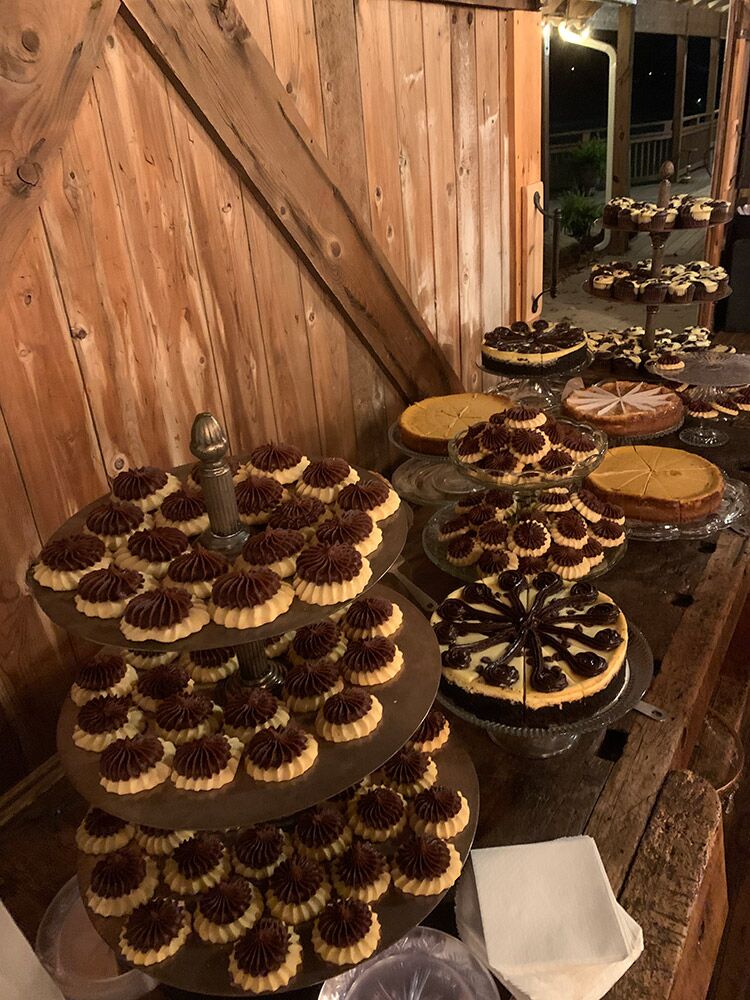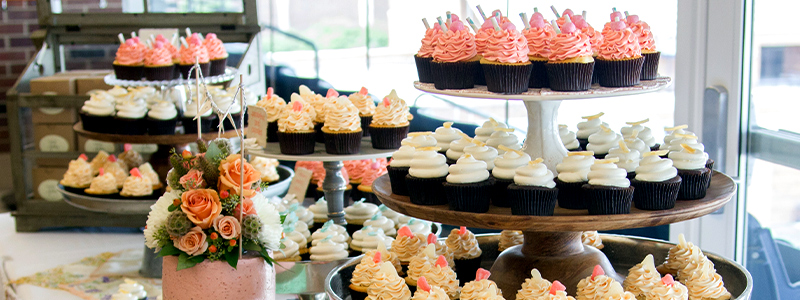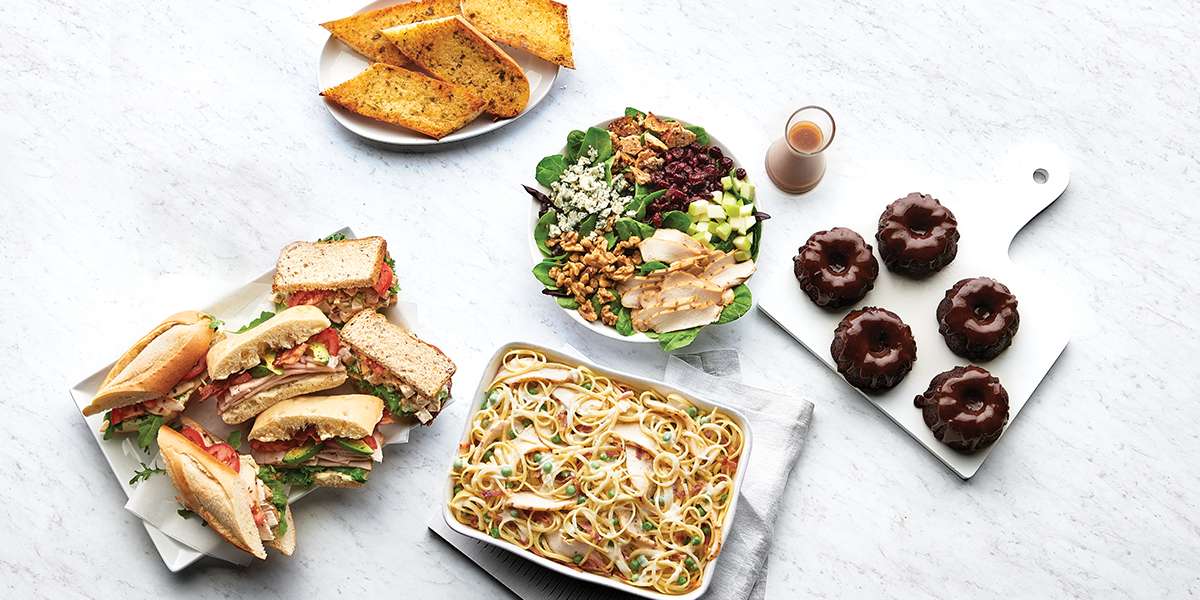Planning a Birthday Party Maddington? Tips for a Wonderful Party
Planning a Birthday Party Maddington? Tips for a Wonderful Party
Blog Article
Comprehending the Art of Bakeshop Products: From Fresh Baked Breads to Irresistible Pastries and Finger Foods
From the scientific research behind the excellent loaf of bread, where fermentation and gluten advancement play critical duties, to the skill needed for developing split pastries, each aspect discloses a compelling story of craftsmanship. The convenience of finger foods highlights how taste and appearance can be artfully incorporated to involve varied preference preferences.
The Science of Bread Making
At the heart of every loaf of bread lies a fascinating interplay of chemistry and biology. The process of bread making begins with the combination of flour, yeast, water, and salt-- each active ingredient playing a vital role in the last item.
Yeast, a living organism, ferments the sugars present in the flour, creating co2 and alcohol while doing so. The co2 gas develops bubbles in the dough, creating it to increase and develop a light appearance. The temperature and humidity throughout fermentation significantly affect yeast activity and, as a result, the bread's flavor and appearance.

Learning Pastry Strategies
Exactly how can one achieve the fragile equilibrium of texture and flavor that specifies exceptional pastry? Understanding bread techniques requires a deep understanding of active ingredients, methods, and the science behind them. Basic to this craft is the option of top quality ingredients-- flour, butter, sugar, and eggs-- each playing a vital role in the end product's taste and appearance.
The strategy of lamination, which entails folding layers of dough and butter, develops the wanted flakiness in pastries like croissants and puff bread. Accuracy in temperature is essential, as butter must stay chilly to ensure optimal layers. Appropriate blending methods, such as the creaming technique for cakes, make certain even unification of air and fat, resulting in a light and ventilated crumb.
Additionally, keeping the ideal moisture levels during cooking can considerably influence the result, guaranteeing that pastries climb correctly and achieve that golden-brown surface. The art of bread likewise demands persistence and practice; each effort boosts one's ability and understanding of the complex equilibrium called for to create tempting breads that thrill the detects. Mastery in these methods eventually identifies a knowledgeable bread chef from an amateur.
Sorts Of Finger Foods
The world of culinary delights prolongs past breads to include a vast variety of finger foods, which are celebrated for their comfort and convenience. These bite-sized treats are perfect for celebrations, using a selection of tastes and appearances that cater to diverse tastes.

On the sweeter side, mini tarts and bite-sized cupcakes use a wonderful coating to any dish, attracting those with a wonderful tooth. Moreover, cheese and charcuterie boards offer as an innovative selection, allowing visitors to personalize their bites with an array of meats, cheeses, nuts, and fruits.
Flavor Profiles in Cooking
Baking is an elaborate dancing of flavor accounts that incorporates wonderful, mouthwatering, and umami notes to create a harmonious experience for the taste. Recognizing these profiles is necessary for bakers seeking to raise their developments.
Sweetness commonly acts as the structure in baked goods, with sugars, fruits, and all-natural sugar enhancing taste depth. Ingredients such as delicious chocolate and caramel introduce complicated wonderful notes that can either control or enhance various other flavors. Alternatively, mouthwatering aspects, often located in breads and pastries, offer balance link and contrast. Components like natural herbs, cheeses, and spices can transform an easy dough into a diverse flavor experience.
Umami, regularly overlooked in baking, plays a considerable duty in enhancing flavors. Components such as aged cheeses, fermented items, or even specific nuts add to a savory deepness that improves general preference.
Additionally, the interplay of level of acidity from active ingredients like buttermilk or citrus passion can brighten flavors, providing a refreshing counterpoint to sweet taste. By attentively integrating these taste accounts, bakers can craft items that reverberate with diverse palates, developing an extraordinary culinary experience. Ultimately, grasping flavor profiles is key to innovation in the world of baking.
Vital Baking Equipments and Active Ingredients
Comprehending taste profiles in cooking collections the phase for picking the click this link right devices and ingredients that facilitate the development of outstanding baked goods. The structure of successful cooking lies in having crucial devices available. Secret items include blending bowls, gauging cups, and spoons for accuracy, as well as a tough stand mixer or hand mixer for simple and easy blending. A dependable collection of cooking pans-- such as sheet pans, loaf frying pans, and cake frying pans-- is essential for accomplishing preferred shapes and structures.
Flour serves as the backbone of many recipes; choosing the appropriate kind-- be it bread, all-purpose, or bread flour-- can dramatically impact the outcome. Cooking powder and baking soda are vital for producing lift in breads and cakes.
Additionally, incorporating taste enhancers like vanilla essence, spices, and citrus zest can boost your productions. By making certain access to these basic devices and ingredients, bakers can with confidence get started on their culinary journey, crafting a diverse selection of fascinating baked goods.
Conclusion
Mastery in bread production, bread preparation, and finger food discussion discloses the intricate connections between ingredients and processes. Bakery Catering Maddington. Exploring diverse taste accounts enhances the baking experience, while essential tools and ingredients offer the structure for success.
Exactly how can one attain the delicate equilibrium of appearance and taste that specifies exceptional bread? Essential to this craft is the option of premium components-- flour, butter, sugar, and eggs-- each playing a crucial function in the last item's flavor and texture.

Comprehending flavor accounts in baking sets the phase for choosing the right devices and active ingredients that facilitate the creation of remarkable baked products. Checking out diverse taste profiles enhances the baking experience, while crucial tools and components provide the structure for success.
Report this page